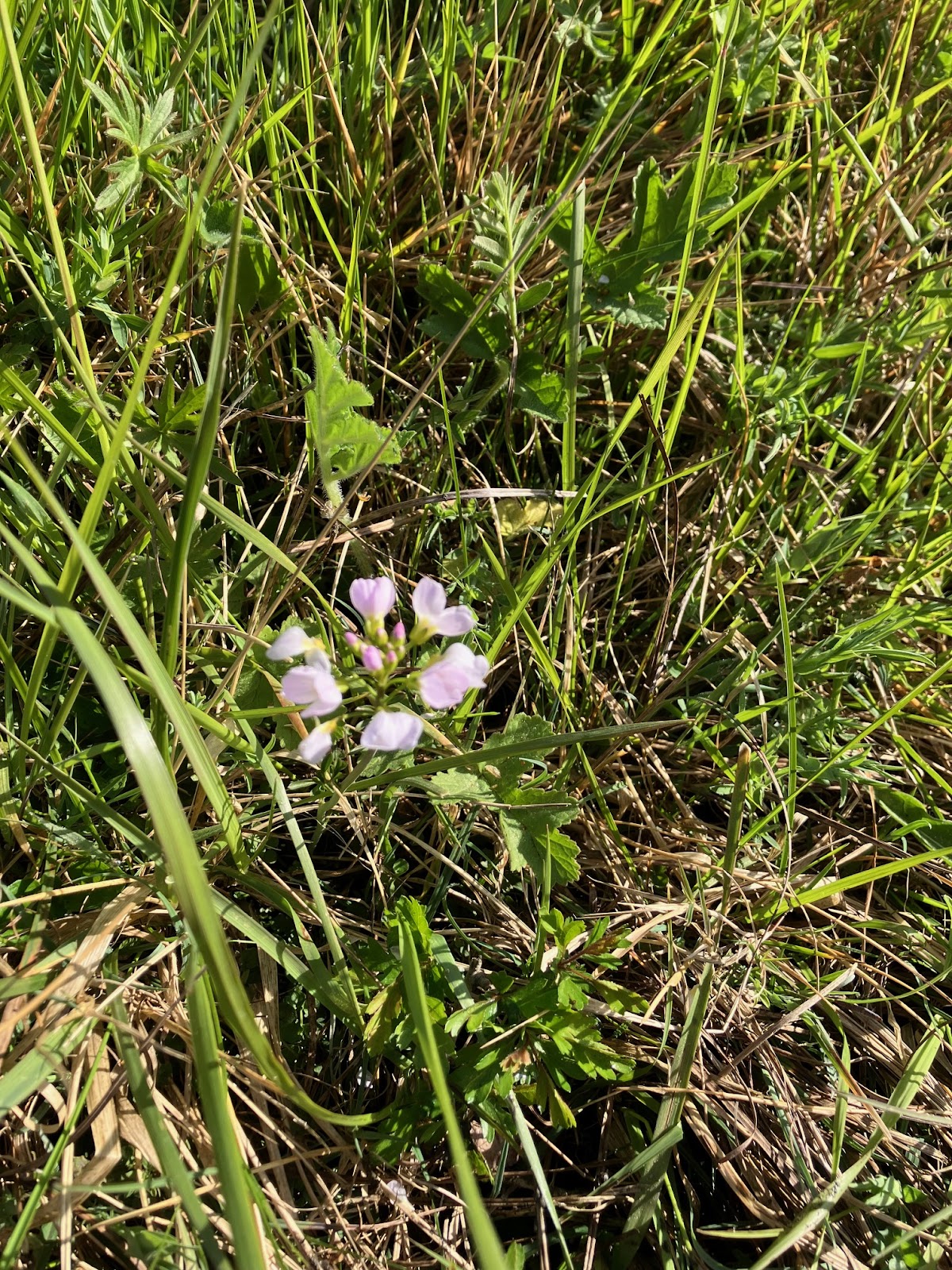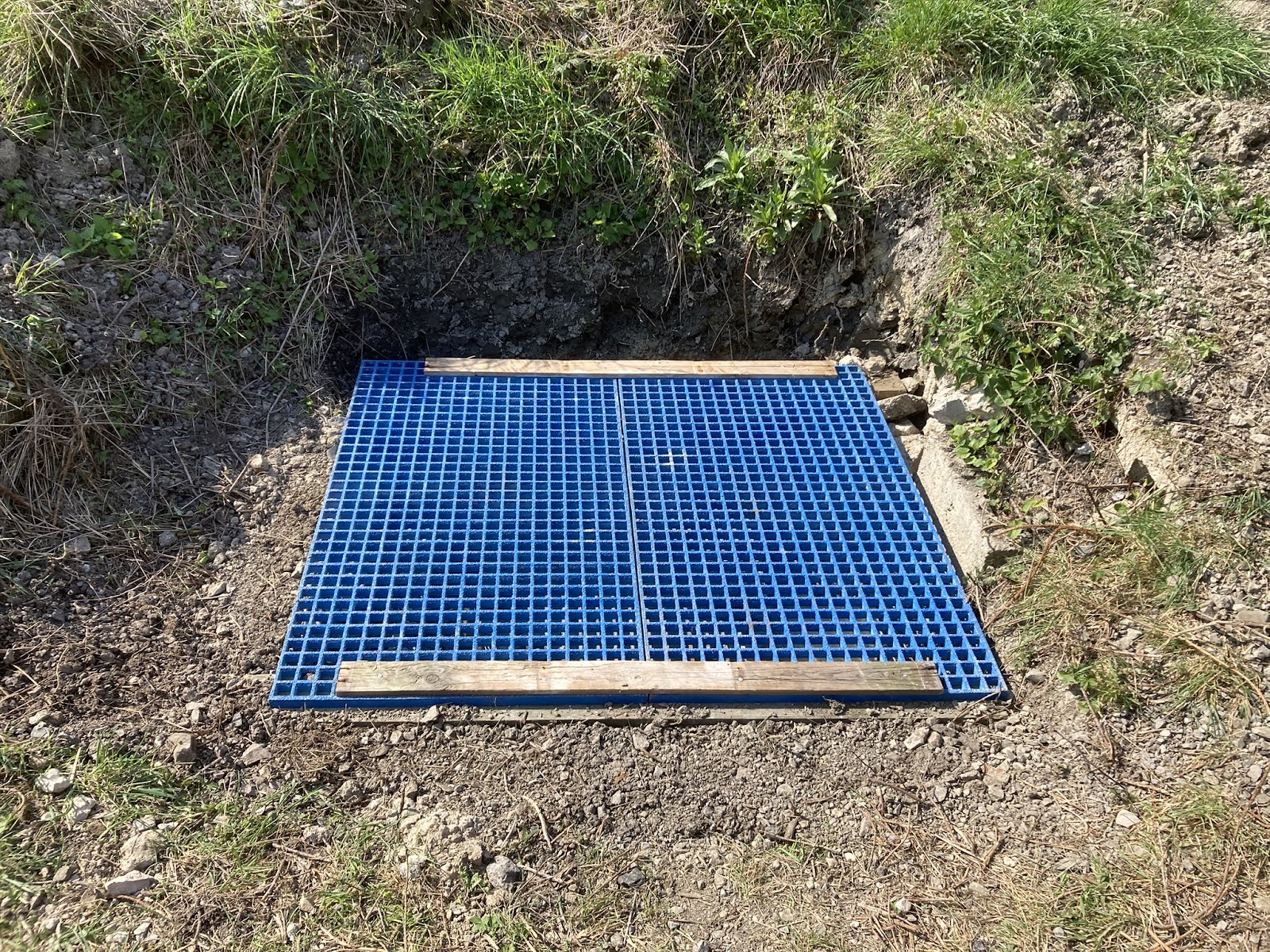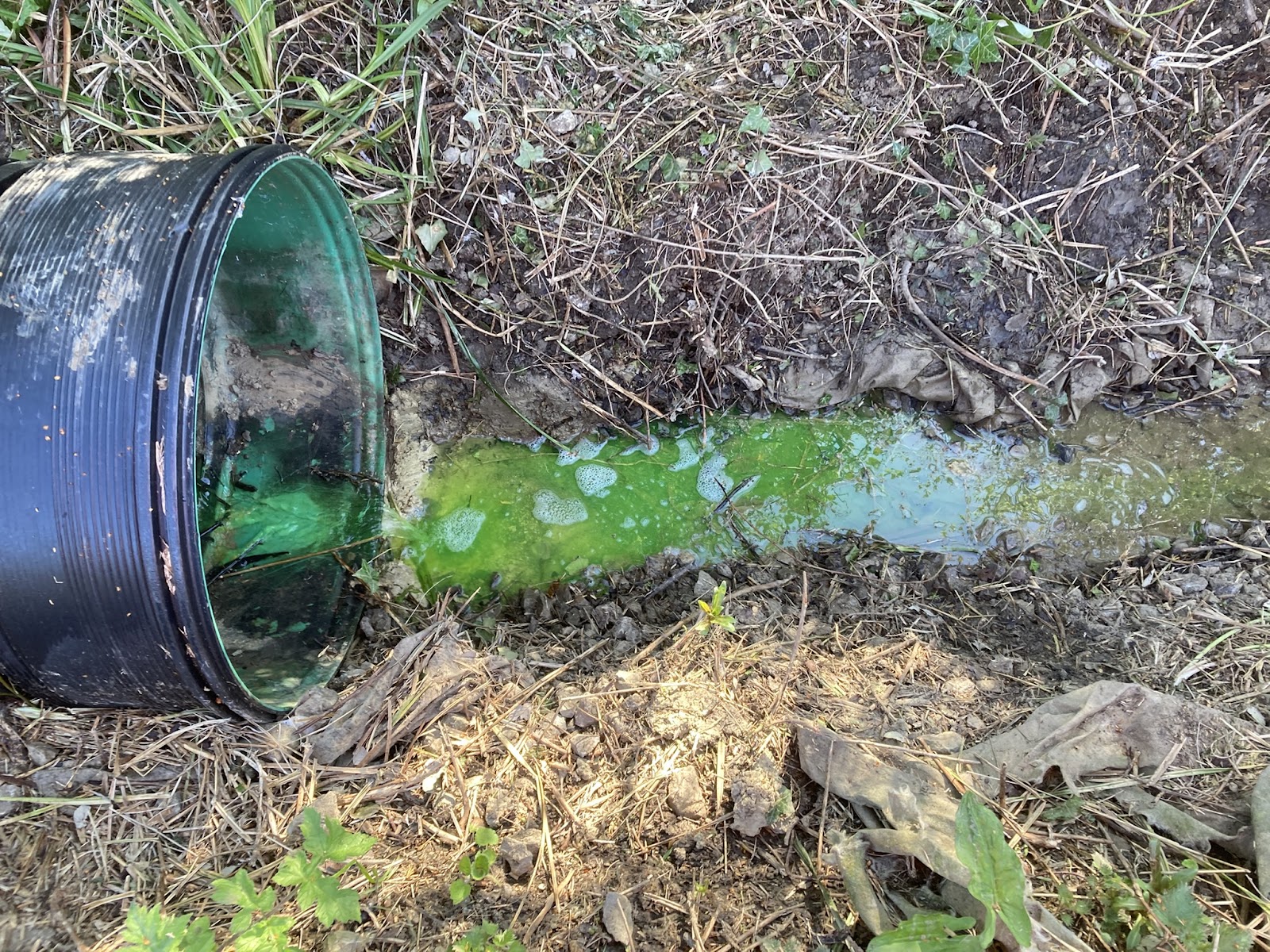With a late(ish) Easter this year, and
the promise of reasonable weather, quite a number of the team decided
on holidays for the week before or the week after Easter (or both).
The exotic holiday destinations included the North Yorkshire Moors,
the Lake District, the Isles of Scilly and Birmingham (for a Genesis
tribute band concert).
Thursday 17th April
Just three of the team attending on Maundy Thursday – Martin, Jonathan and John. However, as very successful day with the added bonus of no passenger trains to worry about.
First task was some dye tracing at Stanton Aqueduct. Three and a half minutes after adding dye to the down side inlet, dyed water emerged from the up side outlet, as expected. Shortly after they noticed a small dyed flow running back to the inlet channel underneath the pipe and into the crack between the channel and the down side abutment. This did not immediately appear in the ground crack underneath the aqueduct. So on the assumption that in heavier flows more water would run back from the exit of the pipe they simulated a heavier flow scenario by pouring dyed water around the crack in the inlet channel. After a coffee break they noted dyed water in the ground crack underneath the aqueduct. There was also water seeping out lower down the cutting, but no dyed water had reached there by the time they left. Thus it looks like all of the water getting into the cutting side comes from the crack in the inlet channel. We have passed on these findings to the bridges team and the Infrastructure Manager to determine the repair plan.
 |
| Dyed water flowing into the pipe on the down (inlet) side... [Photo by Jonathan] |
 |
| ... and seeping back towards the crack between the inlet channel and the trough. [Photo by Jonathan] |
The other task for the day was preparing vertical and horizontal poles for culvert/cross drain safety marker rails. We are using old scaffold poles for these – some of which were part of a condemned scaffold tower. Eight horizontal and sixteen vertical rails were cut to the required sizes – these are for the structures 37B to 37G between Gotherington and Bishops Cleeve. Only one requires a marker on both sides, hence then eight sets for these six structures.
Whilst Martin and John were busy cutting the scaffold poles, Jonathan cleared out the drains behind the workshop in Churchward House yard.
Finally the three paid a visit to Stanway Watermill, one of our neighbouring heritage attractions. https://www.stanwayfountain.co.uk/the-watermill.html
 |
| Stanway Watermill [Photo by Jonathan] |
Back to a more normal number of attendees – 7. (Jonathan, Dave, Andrew, Nigel, Stuart, Peter, John). A single task for the day – beginning the infill around the one length of 600mm diameter twinwall pipe in the down side crest ditch which carries the stream that comes down from Cleeve Hill alongside the former Bonsai World site at Bishops Cleeve.
First job was to remove a section of boundary fence and undergrowth to allow access from the field track and footpath at the top of the cutting. Then we reversed the tipper Transit loaded with some spent ballast along the track almost to the access point. However the uneven surface of the track and the overhanging branches meant we had to stop a few yards short. So the ballast was unloaded into barrows and manually wheeled into place. This was to level up the ground around the circular concrete manhole, under which the stream makes a 90 degree bend). Pushing loaded wheelbarrows is much easier over level ground!
 |
| Gap in the fence and ballast to level the ground around the manhole to make barrowing the pea gravel infill easier. |
We then collected three one tonne loads of pea gravel from Elliots (Cheltenhand) Ltd, for the initial infill around the twinwall pipe. Roger Kentfield, the owner of the adjacent field, very kindly let us bring this in across the field from New Road; thus avoiding the bumpy and narrow track from Two Hedges Road. Conveniently Elliots are located on Stoke Orchard Road, just the other side of Bishops Cleeve.
 |
| The final barrow load of the first tonne of pea gravel. With a short barrow run and a team of 7, shifting one tonne does not take too long. [Photo by Jonathan] |
 |
| Stuart makes sure the pea gravel is level and compacted around the pipe. The rest of the infill will be more spent ballast. |
As a footpath runs along the track and into the field, we were able to chat with some of the hikers and dog-walkers passing by. One of whom was Andy Protherough, the first Head of the Drainage department, with his dog Jaz. Andy can remember some of the previous attempts to prevent this stream overtopping the crest ditch following very wet weather.
Finally we erected two sections of heras fencing to temporarily plug the gap in the hedge/fence; will will need this as an access point for quite a few more weeks to bring in a lot more infill.
Wildlife report: Very definitely we are into late spring. Apple blossom abounds, Horse chestnut in full flower and Hawthorn blossom is starting. We spotted a pair of house-martins (or maybe swifts, they were zooming too quickly for a positive identification). Also in the adjacent field were some crows and a hare. Strangely the noisy gulls of Cleeve did not appear – even at lunchtime. Back at Winchcombe, this time the circling raptor at tea break time over the station was a buzzard.
 |
| Underneath a spreading chestnut tree - not the village blacksmith but the end of the track from Two Hedges Road and where the stream runs under it. |
















